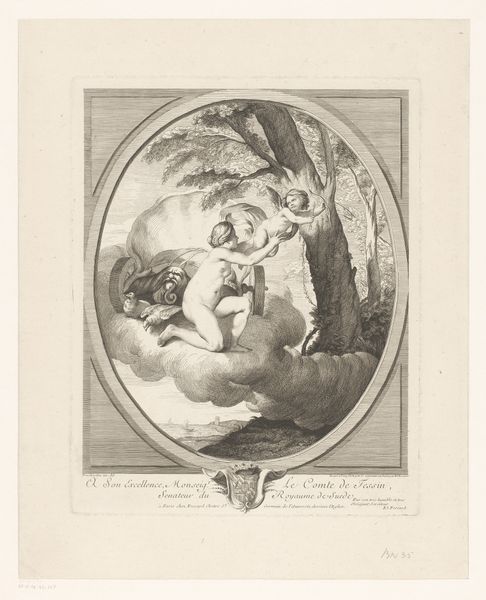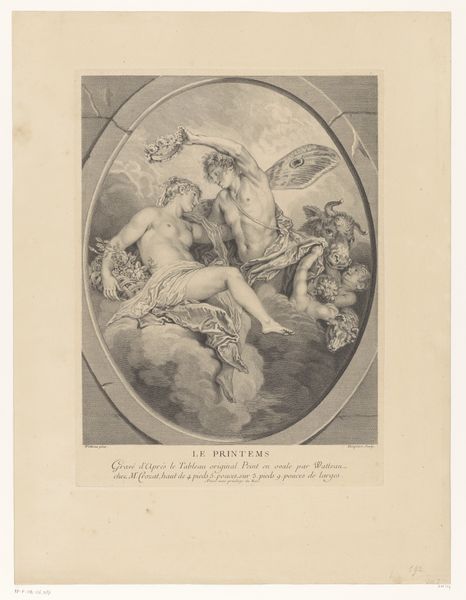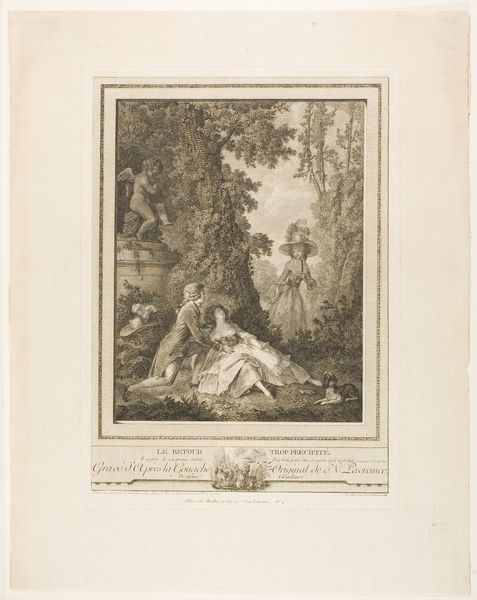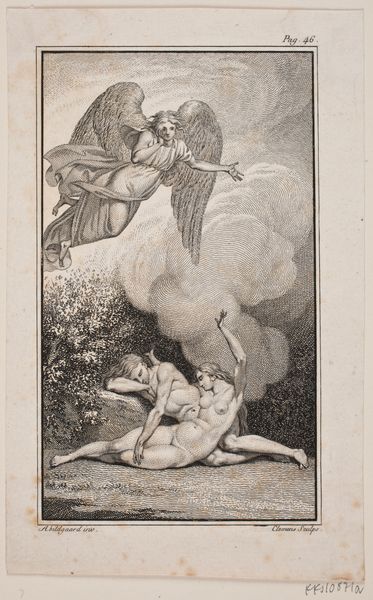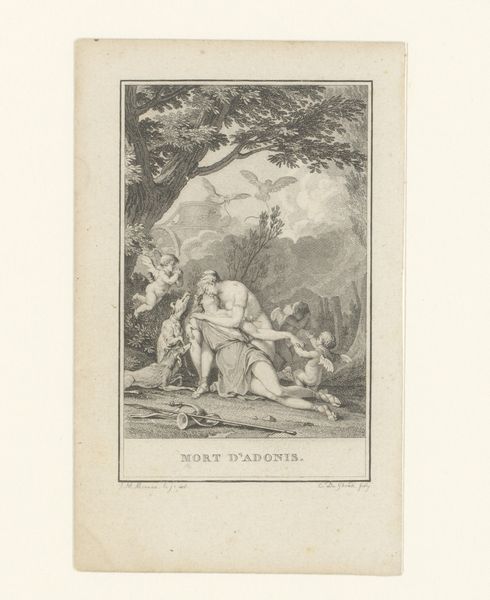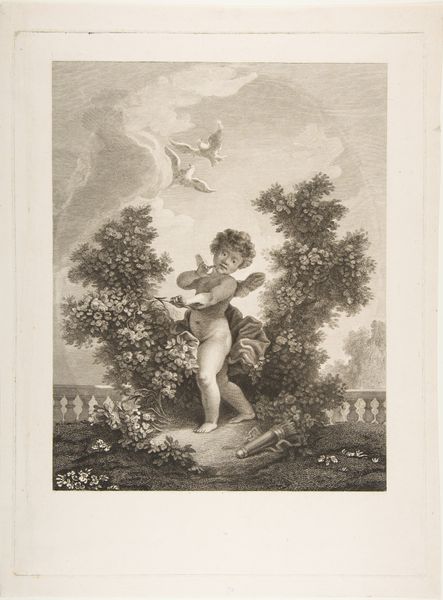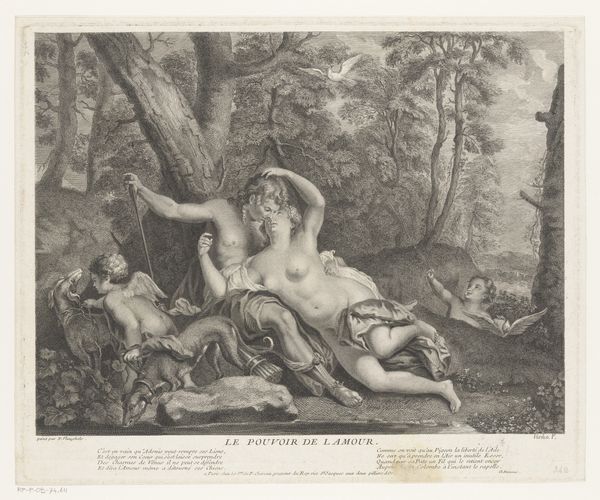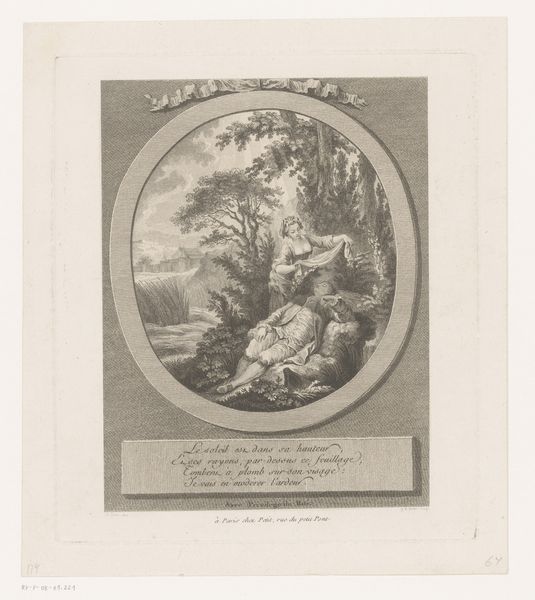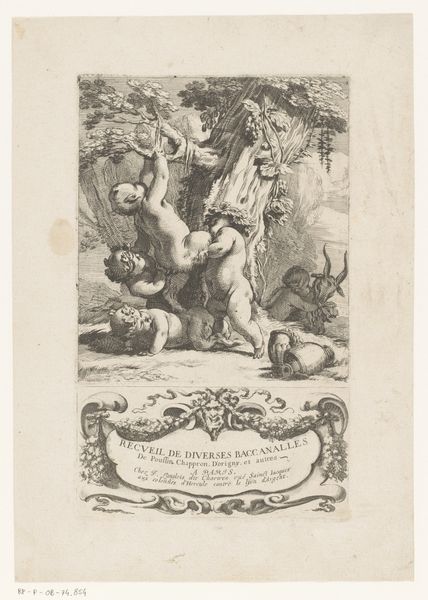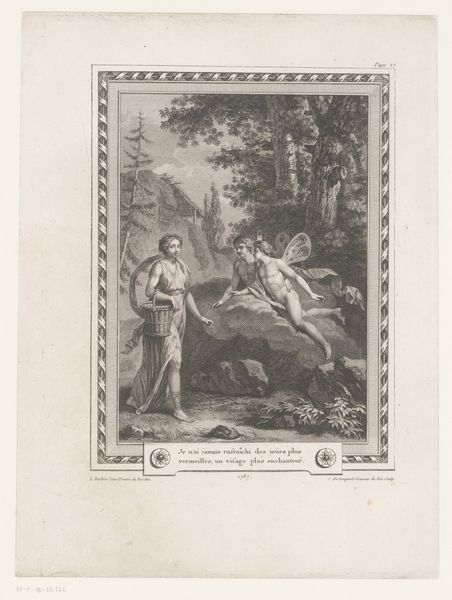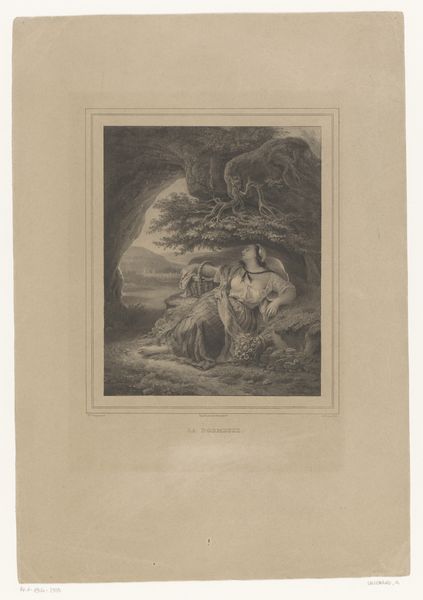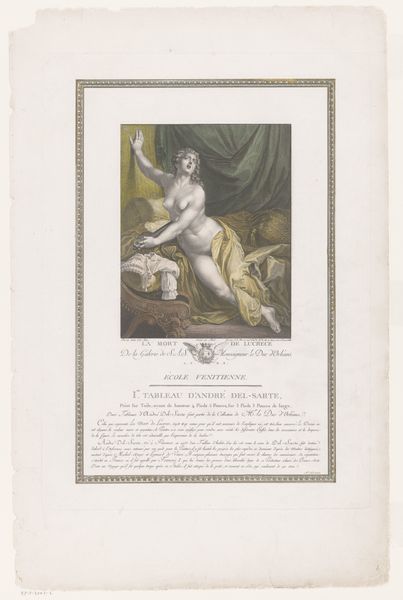
drawing, print, paper, ink, pencil
#
drawing
#
allegory
#
narrative-art
# print
#
landscape
#
figuration
#
paper
#
ink
#
romanticism
#
pencil
#
academic-art
#
miniature
Dimensions: 112 × 80 mm
Copyright: Public Domain
Curator: Oh, there's a certain playful lightness here, wouldn’t you say? Editor: Indeed. Before us, we have “Fluttering Spread Thy Purple Pinions, Gentle,” a drawing by John Wood the Younger, crafted using ink, pencil, and paper. It’s housed right here at the Art Institute of Chicago. Curator: That title. It completely sets the tone. "Fluttering..." It sounds so frivolous and delicate. Then you see how Wood arranges the figures and background; there’s this delicate balance in the composition. The light seems almost to caress the scene. Editor: The diminutive scale speaks volumes too. Small artworks such as this were often created for intimate settings and the close inspection of elite audiences, reflective of a particular taste for the miniature and the precious. This kind of private devotional image played a role in shaping the aesthetic sensibilities of the time. Curator: Notice how the figures almost blend into the landscape? The way he renders the gradations of light and shadow suggests movement—a constant state of flux that destabilizes any rigid, preconceived interpretation. It invites us to see it not as a definitive statement but as a fleeting impression, an emotional response. Editor: That may be, but one must consider this work within the broader cultural landscape. Romanticism and its evolving iconography had a powerful hold on the public imagination at the time, promoting the natural human senses and their experience of nature, a visual vocabulary that permeated visual culture. The miniature, as you observed, became another means of consolidating those ideas within elite spheres. Curator: Perhaps that ambiguity, its inherent ambivalence, is its greatest strength. It denies any single, dogmatic interpretation, instead championing subjective experiences and emotional responses. Editor: Perhaps, or perhaps it is simply the continuation of an exclusive dialogue amongst privileged observers in a world undergoing significant upheaval and change, conveniently packaged within appealing imagery. It’s worth bearing in mind that art doesn’t exist in a vacuum; it both reflects and shapes the values of its time. Curator: Still, regardless of context, I find it evokes an undeniable emotional pull. There’s a beautiful, evocative power to its rendering. Editor: Indeed, there's something compelling about experiencing a vestige from this time; pondering the nature of human emotions within shifting ideological tides gives one pause, and that makes it so intriguing.
Comments
No comments
Be the first to comment and join the conversation on the ultimate creative platform.
